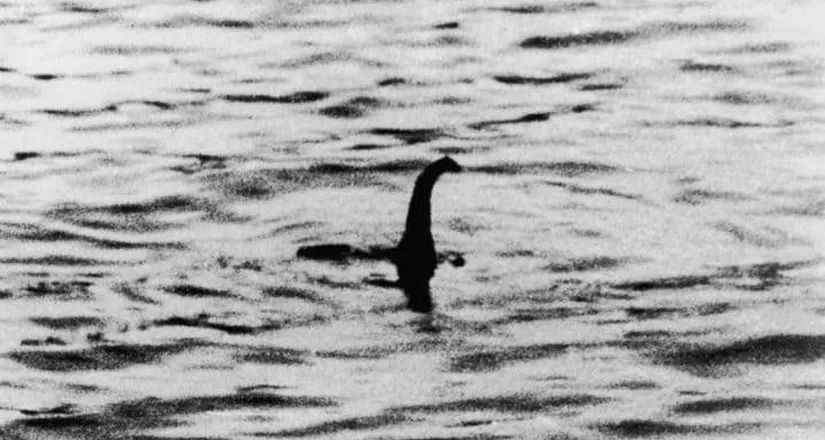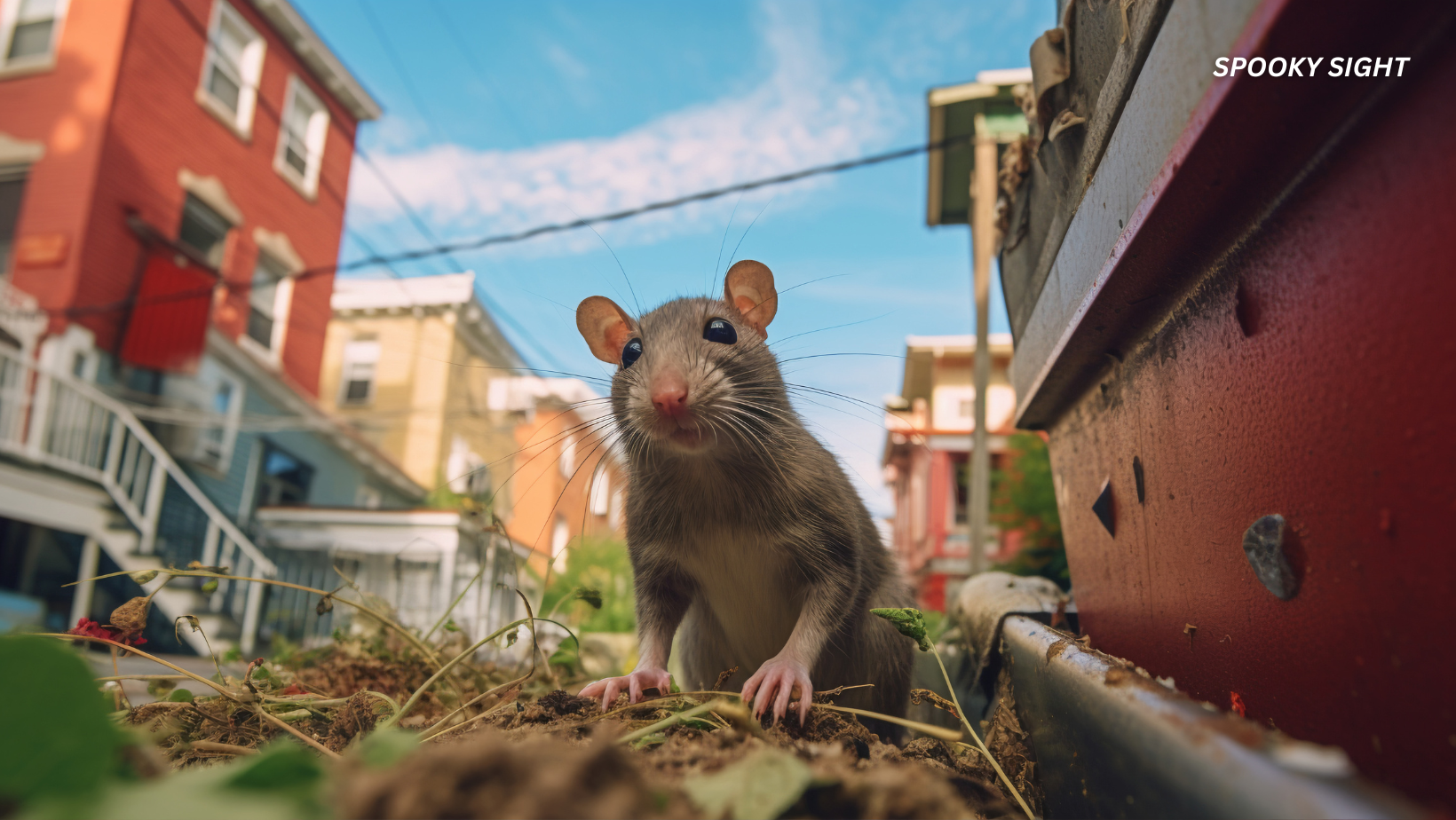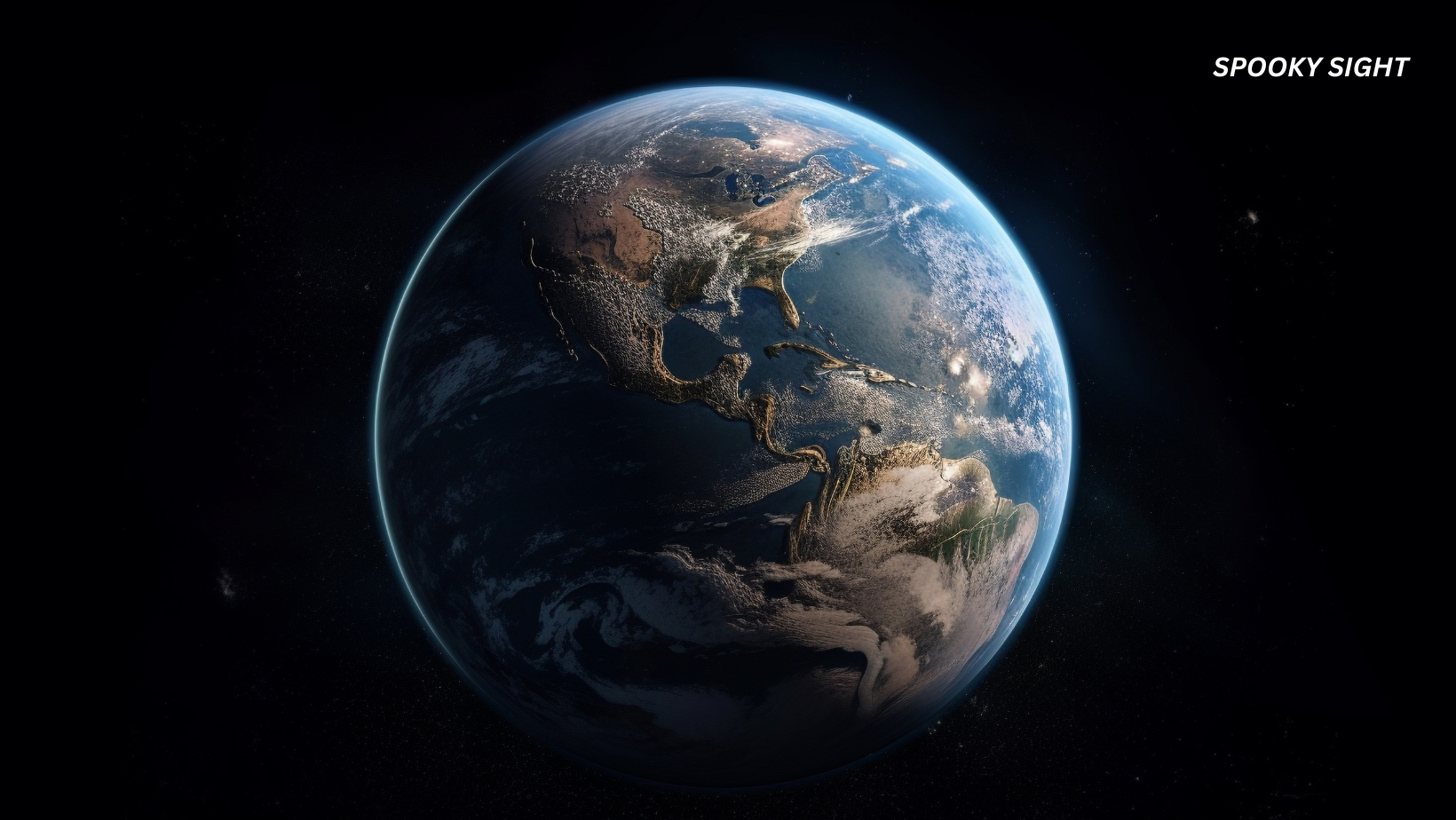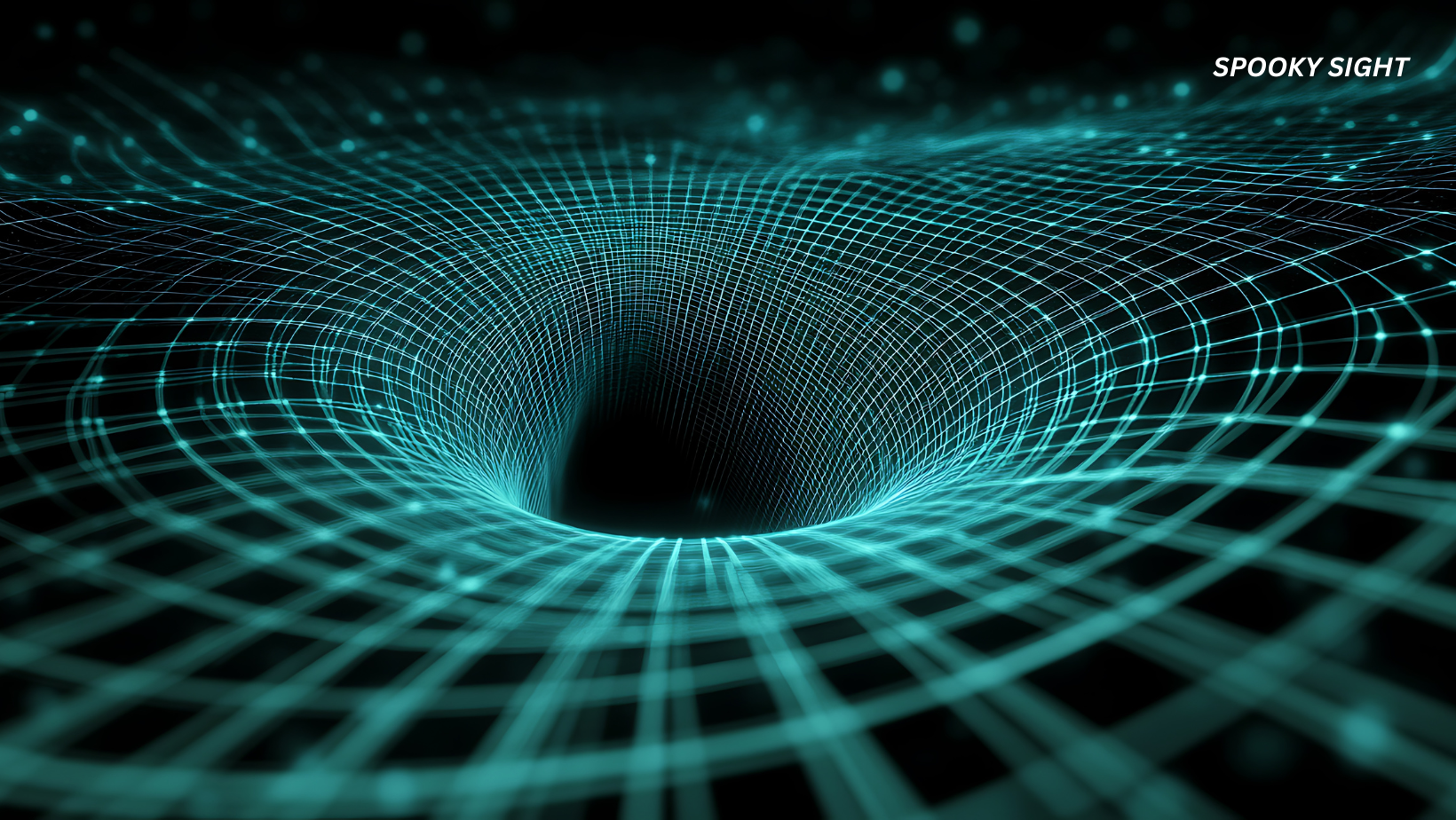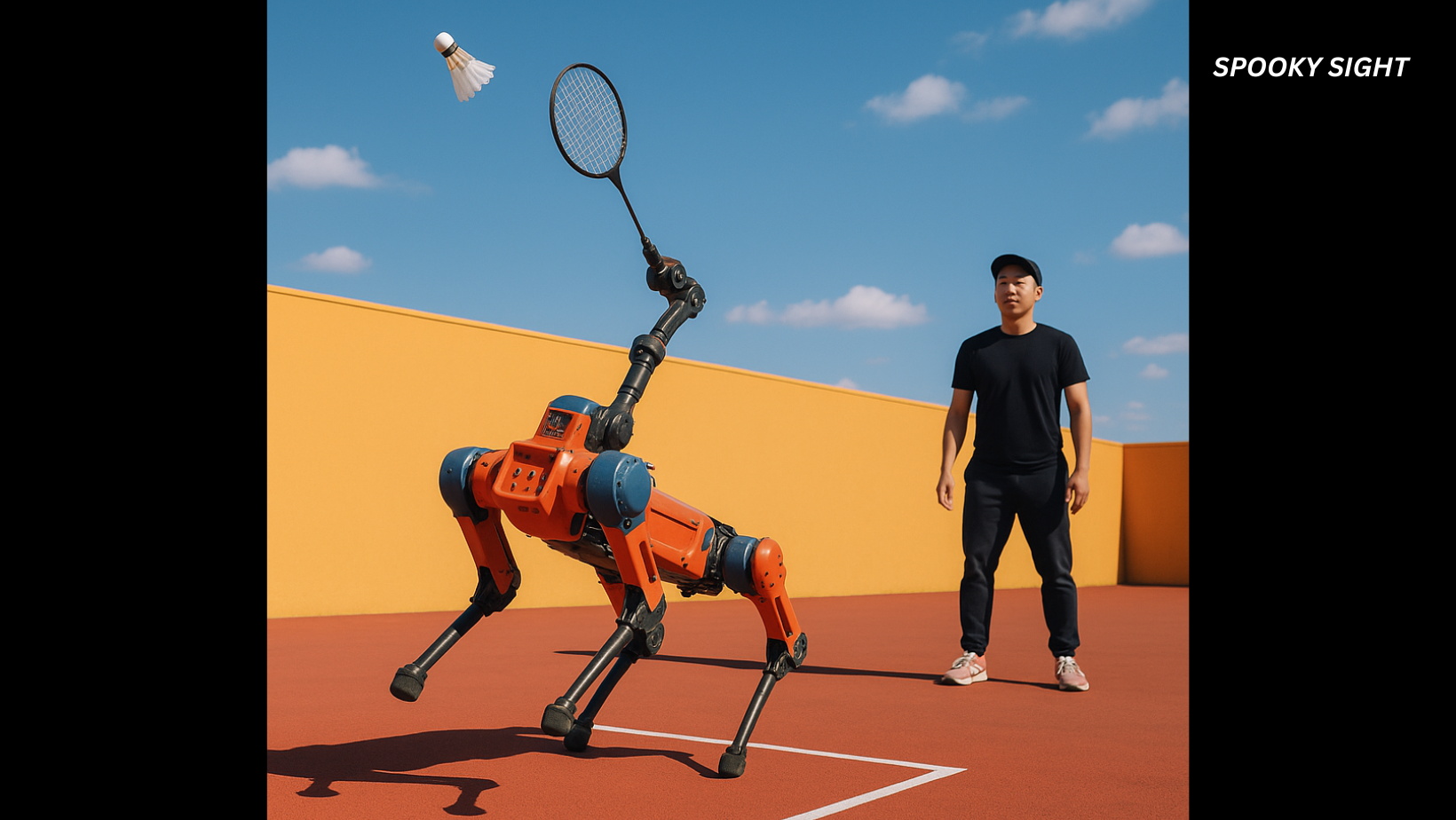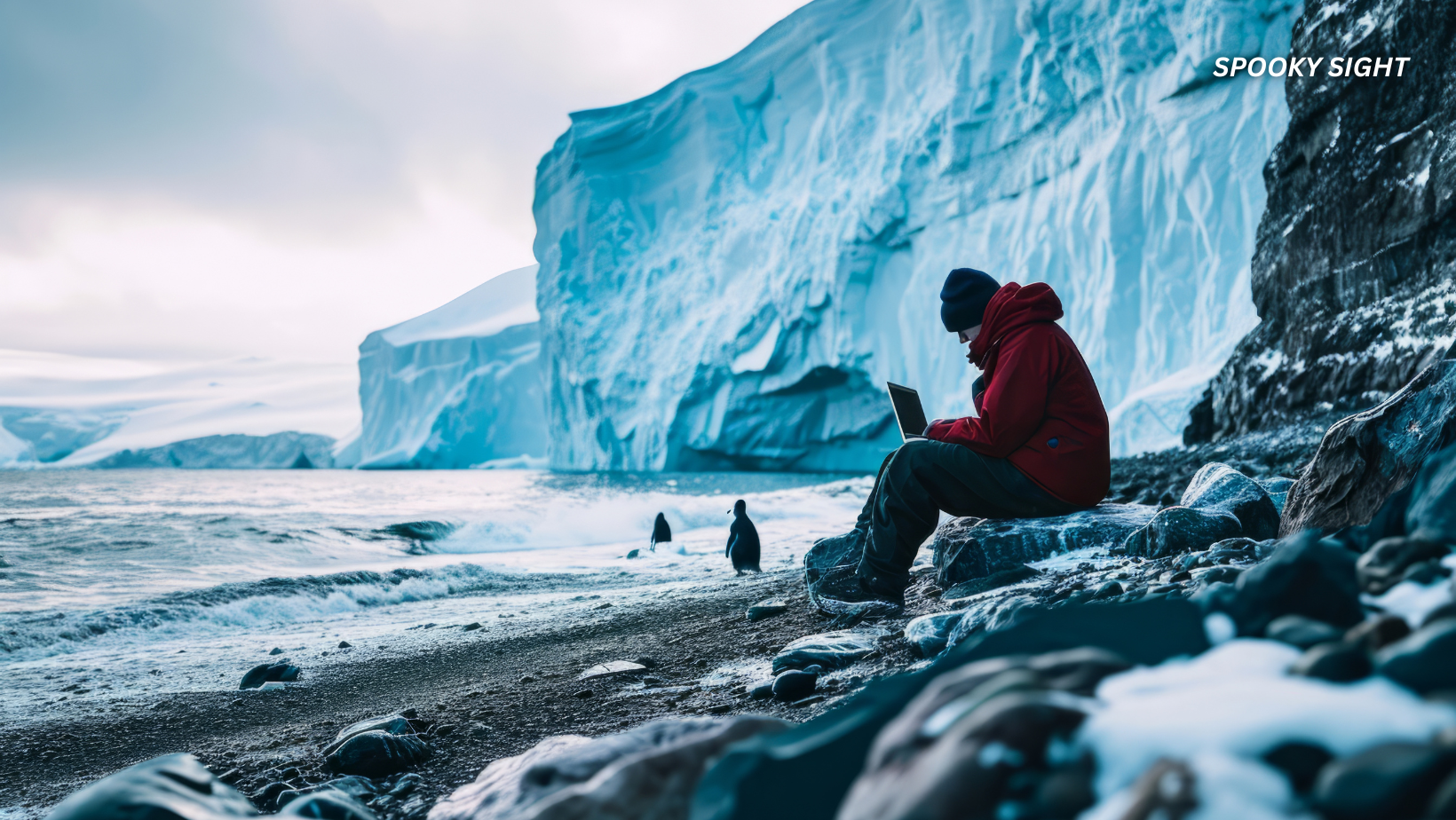In 1934, the Daily Mail tabloid published a photograph that quickly became one of the most iconic images tied to the Loch Ness Monster legend.
Captured by a respected surgeon, this mysterious photo seemed to offer definitive proof of a mysterious creature lurking in the depths of Loch Ness.
But what really lies behind this grainy, black-and-white image? Is it really the definitive proof that the Loch Ness Monster is real?
Here are all the facts:
In this article:
What is the Surgeon’s Photograph?
The Surgeon’s Photograph is hands down one of the most famous images linked to the Loch Ness Monster. Taken in April 1934 by Robert Kenneth Wilson, this photo first made its way into the public eye through the Daily Mail on April 21, 1934.
It was quickly embraced as “proof” that Nessie—the nickname for the most famous European cryptid—could be more than just a legend.
The photo itself? Simple, but haunting. It shows what looks like the head and neck of a long, snake-like creature poking out of Loch Ness in the Scottish Highlands.
People had heard about Nessie for years, but seeing it for the first time? That was something else.
Now, let’s back up a bit. In the early 1930s, there was a ton of rumors about Loch Ness. A new road had just been built along the lake’s northern shore, giving cryptids enthusiasts a clearer view of the water.
Soon after, alleged sightings of the mysterious Nessie skyrocketed. In the middle of this monster craze, Wilson came forward with his now-infamous photo.
But what made people believe him? The key here was Wilson’s status. He wasn’t a monster hunter or a sensationalist. He was a respected London physician, which gave the photo more credibility than other Loch Ness “evidence” floating around at the time.
Plus, Wilson never said anything about a “monster.” He stated that he had only seen “an object” in the water. That was an important detail. It convinced many that Wilson wasn’t looking for the sensational.
The image itself is small and grainy. It shows a slender figure rising from the water, with a slightly tilted head that seemed to mimic the look of some prehistoric sea serpent.
For those who were already believers, this picture was as close to “proof” as they could get. To the general public? It was spooky enough to spark curiosity worldwide.
When the Daily Mail published the photo, they weren’t shy about playing up the mystery. Which only amped up the hype. It was enough for Nessie fever to spread far beyond Scotland.
For decades, the Surgeon’s Photograph stood as the gold standard for those convinced the Loch Ness Monster was real. In fact, until the 1990s, many still viewed this grainy image as the best evidence out there.
Then, something happened… (but more on that later).
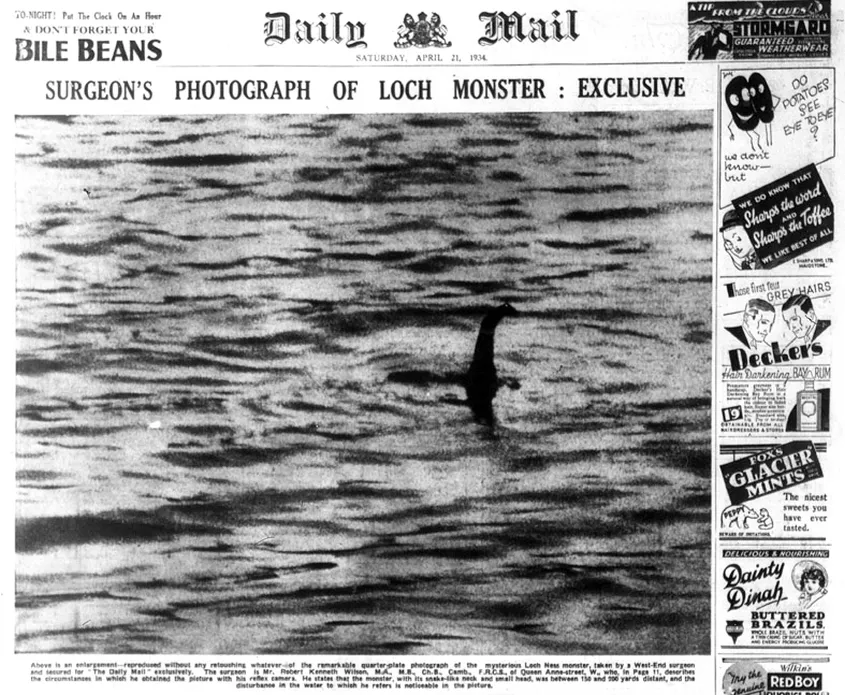
The Role of the Daily Mail
Let’s talk a bit about the Daily Mail first. The tabloid was one of Britain’s most influential newspapers at the time. And, like any tabloid, they had a knack for capitalizing on sensational stories. The Loch Ness Monster was precisely the kind of thing that could grab headlines.
So, they sent reporters, photographers, and even a big-game hunter to Loch Ness to see if they could capture something concrete—or at least publish more stories to keep the public hooked.
SpookySight recommends:
- Is the Almas a Relict Hominid? Theories, Sightings, and Modern Expeditions
- Top 10 Most Mysterious African Cryptids You Need to Know About
- Flatwoods Monster Museum: A Must-See for Cryptids and UFO Fans
Their plan worked. Stories about Nessie started showing up more frequently. Both in the Daily Mail and other outlets.
In the U.S., the New York Times and Chicago Tribune ran shocking stories on the photograph. At the time, American audiences were already drawn to sensationalist stories. This type of material sold well when cryptids (like Bigfoot) were already a big deal.
No wonder headlines (like “Photograph of Loch Ness Monster Taken by Surgeon”) had such a powerful impact on readers.
The same thing happened all across Europe, too.
For example, in France, Paris Soir ran an editorial questioning the photo’s authenticity but still presented it as a captivating mystery. In Germany, the Berliner Tageblatt published multiple articles running side-by-side comparisons of Nessie with other legendary creatures.
SpookySight’s note:
Interestingly, Wilson, the surgeon who submitted the famous photo, reportedly sold it to the Daily Mail for £100 (quite a substantial sum in 1934).
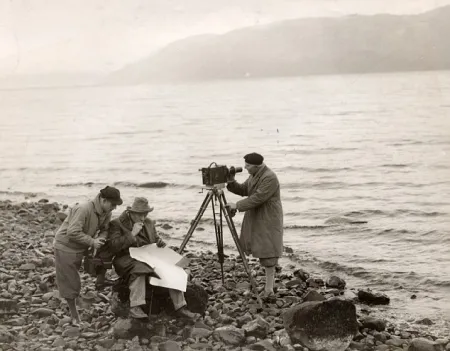
Wetherell’s Failed Expedition
As part of their plan to prove Nessie was real, the Daily Mail also hired Marmaduke Wetherell, a well-known big-game hunter, in late 1933 (this happened before the infamous photograph, but it’s important to remember this date).
They sent him on an expedition to Loch Ness, hoping his skills would lead to solid proof of the monster’s existence. And for a hot minute, it seemed like he delivered.
Wetherell came back with what he claimed were massive footprints on the shores of Loch Ness, leading into the water. Everyone was convinced he had found the real deal.
The tabloid eagerly published the story, confident they were about to break the biggest monster mystery of all time.
But then, the excitement fizzled out—and fast. The footprints were sent to the Natural History Museum for a closer inspection. And surprise, surprise, the experts there quickly discovered the footmarks weren’t made by any mysterious creature.
In fact, they had been made using a dried hippo foot. The whole thing turned out to be an embarrassing hoax.
Now, some defended Wetherell. Maybe he was pranked by the locals? Yet, most others knew he was on it from the start. Either way, the fallout wasn’t pretty.
Wetherell was humiliated, and the Daily Mail, which had gone all-in on his findings, had egg on its face.
Is the Surgeon’s Photograph Real?
Not everyone bought into the Surgeon’s Photograph right away. Almost from the moment it was published in 1934, skeptics raised eyebrows.
Even some believers noticed that there weren’t any reliable reference points in the image, making it hard to determine just how big this “monster” really was.
Early Skepticism
By the 1950s, technology had improved enough for some to suggest that the object in the water looked a bit too small to be a giant prehistoric beast. But despite these early doubts, there was no hard proof that the photo was a fake.
In the 1960s, Maurice Burton (a British naturalist) did his own analysis of the image and pointed out that the photo was likely a hoax.
Burton suggested that the ripples around the object indicated something much smaller than what people had believed to be a large creature. He argued that the object in the water was far too small to be a massive sea creature.
Related:
- 16 Fascinating Facts About the Loch Ness Monster
- What is the Marozi, Kenya’s Legendary Spotted Lion?
- 16 Famous Werewolves in Movies and Television
However, the first major push to debunk the photo came in 1984, when Stewart Campbell (a medical specialist interested in photography) published an analysis in the British Journal of Photography.
Campbell examined the photo in greater detail and concluded that the object couldn’t be more than two or three feet long—far smaller than anyone had initially thought. His hypothesis? The “monster” in the photo was likely a marine bird or otter splashing around in the water.
Although many took Campbell’s analysis seriously, it wasn’t enough to fully convince the public.
The Surgeon’s Photograph held on to its status as “proof” of Nessie for another decade, until the real bombshell dropped in the 1990s.
1994 Confession
The whole truth finally came out in 1994, when Christian Spurling (Wetherell’s stepson and the man who built the monster model) confessed to the hoax.
Spurling’s confession came shortly before his death at the age of 90. It was a full 60 years after the photo had first been published, but the truth behind the famous image was out for the world to see.
Spurling’s confession exposed the whole plan: the model had been constructed from a toy submarine bought at Woolworths. With his expertise in model-making, Spurling crafted a wooden neck and head, which they attached to the submarine.
The group—which included Marmaduke Wetherell, Spurling, and Wetherell’s son Ian—took the model to Loch Ness and staged the famous photo.
Wetherell’s motive? Revenge. He was still bitter about being embarrassed by the Daily Mail over the fake footprints. As Spurling explained, the goal was to give the public exactly what they wanted: a monster, or at least the appearance of one. And it worked. The hoax fooled millions for decades.
Spurling’s confession made headlines and was the final nail in the coffin for the Surgeon’s Photograph. After years of speculation and partial debunking, the hoax was now fully exposed.
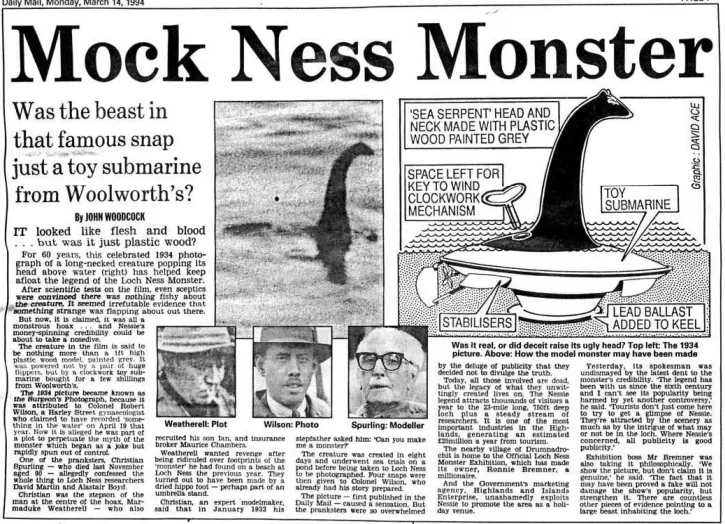
What the Photo Really Shows
So, what does the Surgeon’s Photograph really show? Thanks to modern analysis and Spurling’s confession, we now know that the object in the photo is nothing more than a toy submarine with a fake sea serpent neck attached.
The model itself was only about 12 inches long, making the creature in the photo no more than a few feet tall when accounting for the ripples in the water.
Photographic experts have also pointed out that the way the photo was taken—in black and white, from a distance—was likely deliberate to make it so much more difficult to gauge scale.
The ripples around the model, which look like waves made by a large creature, are actually just regular water disturbances caused by something small.
With today’s technology, it’s easy to see that the image was cleverly manipulated to make a tiny object look much larger than it really was.
Conclusion
In the end, the Surgeon’s Photograph wasn’t the proof people had hoped for. It was a well-executed prank that took advantage of a media frenzy, a public eager to believe, and the reputation of a trusted figure like Robert Kenneth Wilson.
Now that the hoax is out in the open, the photo is a good reminder of how easily people can be fooled when they want to believe in something.

